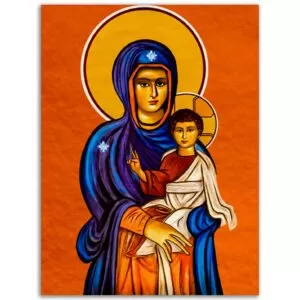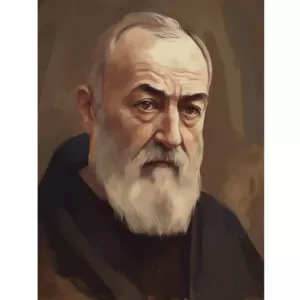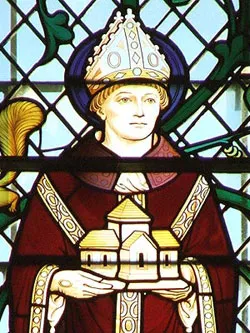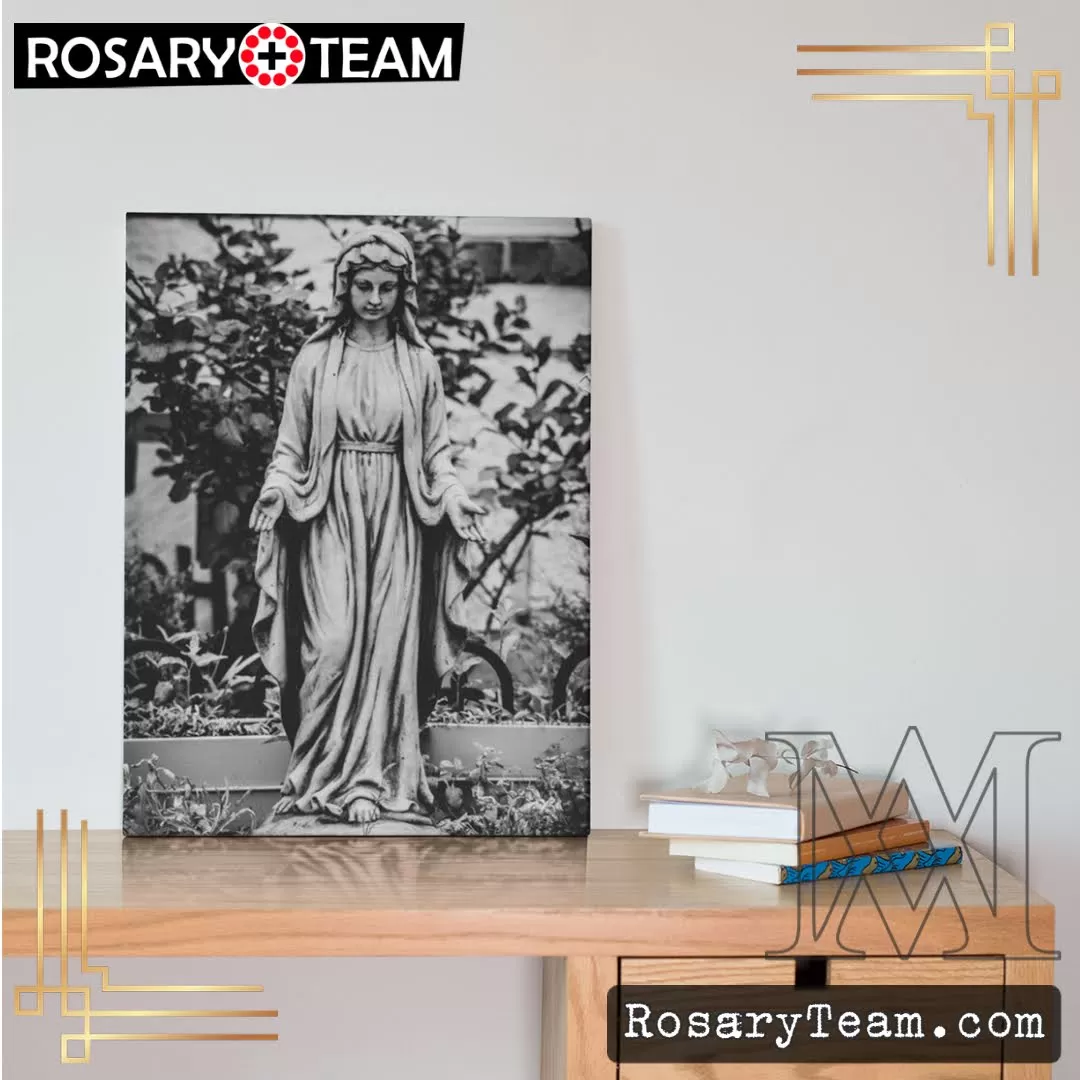SAINT JEROME

SAINT JEROME
Saint Jerome was born Eusebius Hieronymous Sophronius about the year 342 at Stridonius, a
small town at the head of the Adriatic. Jerome was baptized by Pope Liberius in 360.
With his friends, Innocent, Heliodorus, and Hylas, a freed slave, he started overland for Syria. On the way they visited Athens, Bithynia, Galatia, Pontus, Cappadocia, and Cilicia. The party arrived at Antioch about the year 373. With his companions he left the city for the desert of Chalcis, about fifty miles southeast of Antioch. Innocent and Hylas soon died there, and Heliodorus left to return
to the West. Saint Jerome stayed for four years which were passed in study and in the practice of austerity. He had many attacks of illness but suffered still more from temptation. “In the remotest part of a wild and stony desert,” he wrote years afterwards to his friend Eustochium, “burnt up with the heat of the sun, so scorching that it frightens even the monks who live there, I seemed to myself to be in the midst of the delights and crowds of Rome. In this exile and prison to which through fear of Hell I had voluntarily condemned myself with no other company but scorpions and wild beasts. I many times imagined myself watching the dancing of Roman maidens as if I had been in the midst of them. My face was pallid with fasting yet my will felt the assaults of desire. In my cold body and my parched flesh, which seemed dead before its death, passion was still able to live. Alone with the enemy, I threw myself in spirit at the feet of Jesus, watering them with my tears, and tamed my flesh by fasting whole weeks. I am not ashamed to disclose my temptations, though I grieve that I am not now what I then was.”
In about 380 Jerome went to Constantinople to study the Scriptures under the Greek, Gregory of Nazianzus,bishop of that city. Two years later he went back to Rome with Paulinus of Antioch to attend a council which Pope Damasus was holding to deal with the Antioch schism. At the
Pope’s request he prepared a revised text, based on the Greek, of the Latin New Testament. The current version had been disfigured by “wrong copying, clumsy correction, and careless interpolations.” He also revised the Latin psalter. Along with his official duties he was fostering a new movement of Christian asceticism among a group of noble Roman ladies. Several of
them were to be canonized.
When Pope Damasus died in 384, he was succeeded by Siricius, who was less friendly to Jerome. He also managed to get himself widely disliked by pagans and evil doers whom condemned him. In a letter to Eustochium he writes with scorn of certain members of the Roman clergy. “All their anxiety is about their clothes. You would take them for bridegrooms rather than for clerics. All they think about is knowing the names and houses and doings of rich ladies.” With what remained of Jerome’s own patrimony and with financial help from Paula, a monastery for men was built near the basilica of the Nativity at Bethlehem, and also houses for three communities of women. Paula became head of one of these, and after her death was succeeded by her daughter Eustochium. Jerome himself lived and worked in a large cave near the Saviour’s birthplace. He opened a free school there and also a hospice for pilgrims.
When the Christian faith was threatened Jerome could not be silent. In the time of Pope Damasus, he composed a book on the perpetual virginity of the Virgin Mary against one Helvidius, who had maintained that Mary had not remained always a virgin but had had other children by Saint Joseph, after the birth of Christ. This and similar ideas were now again put forward by a certain Jovinian who had been a monk. Paula’s son-in-law, Pammachius, sent some of this heretical writing to Jerome, and he, in 393, wrote two books against Jovinian. In the first he described the excellence of virginity. The books were written in Jerome’s vehement style and there were expressions in them which seemed lacking in respect for honorable matrimony.
Pammachius informed Jerome of the offense which he and many others at Rome had taken at them. Thereupon Jerome composed his Apology to Pammachius, sometimes called his third book against Jovinian, in which he showed by quoting from his own earlier works that he regarded marriage as a good and honorable state and did not condemn even a second or a third marriage.
A few years later he turned his attention to one Vigilantius, a Gallic priest, who was denouncing both celibacy and the veneration of saints’ relics, calling those who revered them idolaters and worshipers of ashes. In defending celibacy Jerome said that a monk should purchase security by flying from temptations and dangers when he distrusted his own strength. As to the veneration of relics, he declared: “We do not worship the relics of the martyrs, but honor them in our worship of Him whose martyrs they are. We honor the servants in order that the respect paid to them may be reflected back to the Lord.” Honoring them, he said, was not idolatry because no Christian had ever adored the martyrs as gods; on the other hand, they pray for us. “If the Apostles and
martyrs, while still living on earth, could pray for other men, how much more may they do it after their victories? Have they less power now that they are with Jesus Christ?” He told Paula, after the death of her daughter Blesilla, “She now prays to the Lord for you, and obtains for me the pardon of my sins.”
Saint Jerome undertook to translate most of the books of the Old Testament directly from the Hebrew. He began with the Books of Kings and went on with the rest at different times. When he found that the Book of Tobias and part of Daniel had been composed in Chaldaic he set himself to
learn that difficult language. The only parts of the Latin Bible, now known as the Vulgate, which were not either translated or worked over by him are the Books of Wisdom, Ecclesiasticus, Baruch, and the two Books of the Maccabees. He revised the Psalms once again, with the aid of Origen’s Hexapla, and the Hebrew text. This last is the version included now in the Vulgate and used generally in the Divine Office. His first revision, known as the Roman Psalter, is still used for the opening psalm at Matins and for the Divine Office in the cathedrals of Saint Peter at Rome and Saint Mark at Venice, and in the Milanese rite.
In the sixteenth century the great Council of Trent pronounced Jerome’s Vulgate the authentic and authoritative Latin text of the Catholic Church. In 1907 Pope Pius X entrusted to the Benedictine Order the office of restoring as far as possible the correct text of Saint Jerome’s Vulgate which during fifteen centuries of use had naturally become altered in many places. The Bible now ordinarily used by English speaking Catholics is a translation of the Vulgate. The Confraternity Edition of the New Testament appearing in 1950 represents a complete revision.
In 404 his staunch friend, the saintly Paula, died. The following year Paula’s daughter Eustochium died. The aged Jerome soon fell ill and after lingering for two years succumbed. He died peacefully on September 30, 420 and was buried under the church of the Nativity at Bethlehem. His body now lies somewhere in the Sistine Chapel of the basilica of Santa Maria Maggiore at Rome.
Saint Jerome has been a popular subject with artists, who have pictured him in the desert,
as a scholar in his study, and sometimes in the robes of a cardinal. He is often shown with a lion, from whose paw, according to legend, he once drew a thorn.
Saint Jerome, Confessor, Doctor of the Church. Feast Day is September 30.
rosary.team
















